Your cart is currently empty!
Month: July 2024
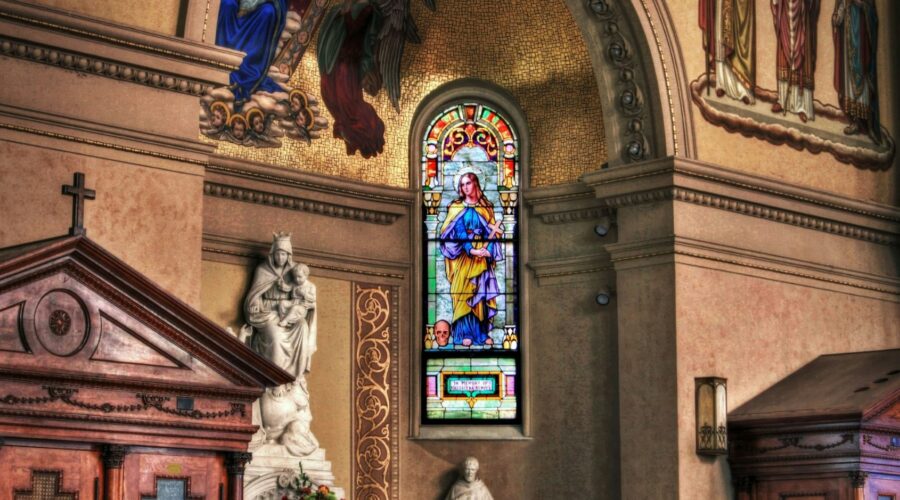
Spirit-Filled Churches: Find One Near You
What is a Spirit-Filled Church?
A spirit-filled church is a Christian community where the Holy Spirit is believed to be actively present and influential in the lives of its members. These churches typically emphasize the gifts of the Spirit, such as speaking in tongues, prophecy, and healing, and believe that these gifts are essential for a vibrant and authentic Christian experience.
Characteristics of a Spirit-Filled Church
Spirit-filled churches often exhibit certain characteristics that set them apart from other Christian communities. These characteristics may include:
- A strong emphasis on the Bible as the authoritative Word of God
- A belief in the Trinity (Father, Son, and Holy Spirit)
- A focus on personal salvation through faith in Jesus Christ
- A belief in the power of the Holy Spirit to transform lives
- An atmosphere of worship and praise
Benefits of Attending a Spirit-Filled Church
Attending a spirit-filled church can offer numerous benefits for believers. These benefits may include:
- A deeper relationship with God
- A stronger understanding of the Bible
- An increased faith and trust in God
- Experiences of God’s presence and power
- Spiritual growth and maturity
Finding a Spirit-Filled Church
If you are looking for a spirit-filled church, there are several resources available to help you find one near you. You can:
- Ask friends or family members for recommendations
- Search online for local churches that emphasize the Holy Spirit
- Visit different churches and experience their services firsthand
Tips for Choosing a Spirit-Filled Church
When choosing a spirit-filled church, it is important to consider the following tips:
- Make sure the church aligns with your own beliefs and values
- Find a church where you feel comfortable and welcome
- Observe the church’s leadership and ensure they are biblically sound
- Consider the church’s ministries and whether they meet your needs
Conclusion
Spirit-filled churches play a vital role in the Christian community. They offer a place for believers to experience the presence and power of the Holy Spirit, grow in their faith, and serve others. If you are looking for a church where you can encounter God in a real and transformative way, consider seeking out a spirit-filled church near you.
Additional Resources
To learn more about spirit-filled churches, please consider the following resources:
List of Spirit-Filled Churches in Major Cities City Church Location New York City Times Square Church 1560 Broadway, New York, NY 10036 Los Angeles Angelus Temple 1100 Glendale Blvd, Los Angeles, CA 90026 Chicago Willow Creek Community Church 21W200 Butterfield Rd, South Barrington, IL 60010 Houston Lakewood Church 3700 Southwest Freeway, Houston, TX 77027 Dallas First Baptist Church of Dallas 1707 San Jacinto St, Dallas, TX 75201 
Hope Church: A Comprehensive Guide to a Transformative Spiritual Experience
An Overview of Hope Church
Hope Church is a vibrant and welcoming community of believers united by their faith in Jesus Christ. With locations across the globe, Hope Church is dedicated to spreading the message of hope, love, and redemption through engaging worship services, insightful teachings, and impactful outreach programs.
What We Believe
- The Bible is the inspired, infallible Word of God.
- God is one God, eternally existing in three persons: the Father, the Son, and the Holy Spirit.
- Jesus Christ is the Son of God, fully divine and fully human.
- Sin separates us from God, and only through faith in Jesus Christ can we be forgiven and reconciled to Him.
- The Holy Spirit empowers us to live a Christ-like life and guides us in all truth.
Igniting a Passion for Worship
Worship at Hope Church is not merely a performance but an authentic expression of our love and devotion to God.
Our Worship Services
- Contemporary Services: Uplifting music, dynamic teaching, and interactive elements create an engaging worship experience.
- Traditional Services: Reverent liturgy, hymns, and classic anthems provide a worshipful and uplifting atmosphere.
- Multicultural Services: Diverse cultures and languages come together to celebrate the universal truth of God’s love.
The Worship Team
A gifted team of musicians, vocalists, and technical artists work diligently to create an exceptional worship experience that inspires and connects the congregation.
Life-Changing Teachings
The teachings at Hope Church are grounded in biblical truth and designed to equip Christians for practical living.
Sermons
- Our pastors present thought-provoking sermons that explore the depth and relevance of Scripture.
- They address real-life challenges, provide spiritual guidance, and challenge listeners to grow in faith and character.
Bible Studies
- Small group Bible studies offer a more intimate setting for in-depth study and discussion of God’s Word.
- Led by knowledgeable leaders, these studies foster spiritual growth, community, and personal application.
Discipleship Programs
Mentoring and discipleship programs connect seasoned believers with newer Christians to guide them in their spiritual journey.
A Heart for Outreach
Hope Church is actively involved in making a difference in our communities and around the world.
Community Service
- Hope Church volunteers serve at local soup kitchens, homeless shelters, and hospitals.
- We organize community events and programs to provide support and encouragement to those in need.
Mission Trips
- Short-term and long-term mission trips offer opportunities to serve and share the gospel globally.
- Teams travel to various countries to engage in evangelism, community development, and humanitarian aid.
Partnering with Organizations
Hope Church collaborates with other organizations to maximize our outreach impact.
Connecting with Hope Church
Whether you’re new to the area or seeking a vibrant spiritual community, Hope Church welcomes you with open arms.
Locations and Service Times
Visit our website to find the Hope Church location nearest you and view our service times.
Online Resources
- Website: Our official website provides sermon archives, event updates, and ministry information.
- Facebook: Stay connected with us on social media for daily inspiration and announcements.
Frequently Asked Questions
Q: What is the dress code for Hope Church?
A: Casual and comfortable attire is welcome.
Q: Is there childcare available?
A: Yes, childcare is provided for infants through preschoolers during all worship services and Bible studies.
Q: Can I visit Hope Church if I’m not a Christian?
A: Absolutely! Hope Church welcomes people from all walks of life, regardless of their religious affiliation.
Conclusion
Hope Church is a place where faith flourishes, lives are transformed, and hope is reignited. We invite you to join us on this extraordinary journey of spiritual growth and service.
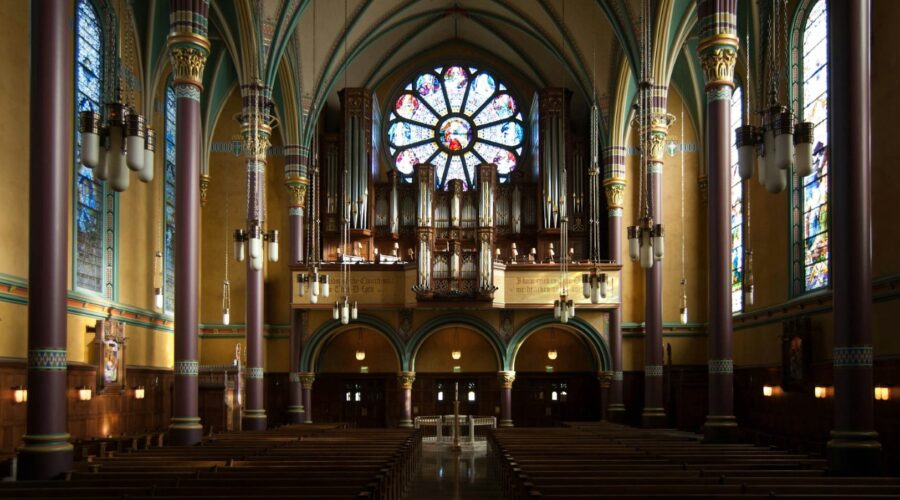
Discover the Church of Jesus Christ of Latter-day Saints: A Comprehensive Guide
Introduction
The Church of Jesus Christ of Latter-day Saints, often referred to as the Mormon Church, is a Christian denomination with a rich history and a global presence. This comprehensive guide will delve into the key aspects of the church, including its history, beliefs, practices, and organization. By exploring these elements, we aim to provide a thorough understanding of this unique faith community.
History
Pioneer Era
The Church of Jesus Christ of Latter-day Saints was founded by Joseph Smith Jr. in 1830 in Fayette, New York. Smith claimed to have received divine revelations, including the Book of Mormon, which he translated from ancient golden plates. The church faced significant persecution and discrimination in its early years, leading to the forced migration of its members to the American West under the leadership of Brigham Young.
Settlement in Utah
In 1847, Brigham Young and a group of Latter-day Saints arrived in the Salt Lake Valley, establishing the first permanent settlement in Utah. The church played a pivotal role in the development of the western United States, encouraging self-sufficiency and cooperation among its members through the establishment of communities and cooperative economic practices.
Beliefs
Restoration of the Gospel
Latter-day Saints believe that the Church of Jesus Christ was restored to the earth through Joseph Smith Jr., after centuries of apostasy. They hold that Christ’s original teachings and ordinances have been restored through modern revelation and that the church is the only true and living church on Earth.
Scriptures
In addition to the Bible, Latter-day Saints consider the Book of Mormon, the Doctrine and Covenants, and the Pearl of Great Price as sacred scripture. These books are believed to contain additional revelations from God and provide insights into Christ’s teachings and the history of the church.
Plan of Salvation
Latter-day Saints believe that God has a plan for the eternal progression of His children. This plan includes pre-mortal existence, mortal life, and the afterlife. They believe that we progress through various stages of existence, striving to become more like God and achieve eternal life.
Practices
Ordinances
Ordinances are sacred ceremonies that Latter-day Saints believe are essential for salvation. These include baptism, confirmation, the sacrament (communion), and temple ordinances such as marriage for eternity and sealing of families.
Worship
Latter-day Saints gather for weekly worship services, known as sacrament meetings. These services typically include prayers, hymns, and sermons by lay members of the congregation. They also hold temple ceremonies in dedicated buildings where members can participate in sacred ordinances and feel closer to God.
Missionary Work
Missionary work is an important part of Latter-day Saint culture. Young men and women aged 18-25 are encouraged to volunteer to serve two-year missions, during which they share their beliefs with others and provide service to local communities.
Organization
Lay Leadership
The Church of Jesus Christ of Latter-day Saints is organized on a lay leadership model. Local congregations are led by bishops, who are volunteer lay leaders called by revelation. Stake presidents, who oversee multiple congregations, are also lay leaders.
Councils and Quorums
Councils and quorums are groups of men and women who receive leadership assignments within the church. These include the Priesthood Council, the Relief Society (for women), the Young Men and Young Women organizations, and the Primary organization (for children).
First Presidency and Quorum of the Twelve Apostles
The First Presidency, consisting of the church’s president, two counselors, and the Quorum of the Twelve Apostles, serve as the highest governing body of the church. These leaders are considered prophets, seers, and revelators and provide guidance and direction to the church worldwide.
Conclusion
The Church of Jesus Christ of Latter-day Saints is a vibrant and diverse faith community with a rich history, unique beliefs, and distinctive practices. Understanding the key aspects of the church, including its history, beliefs, practices, and organization, provides a deeper appreciation for this globally recognized religious movement.
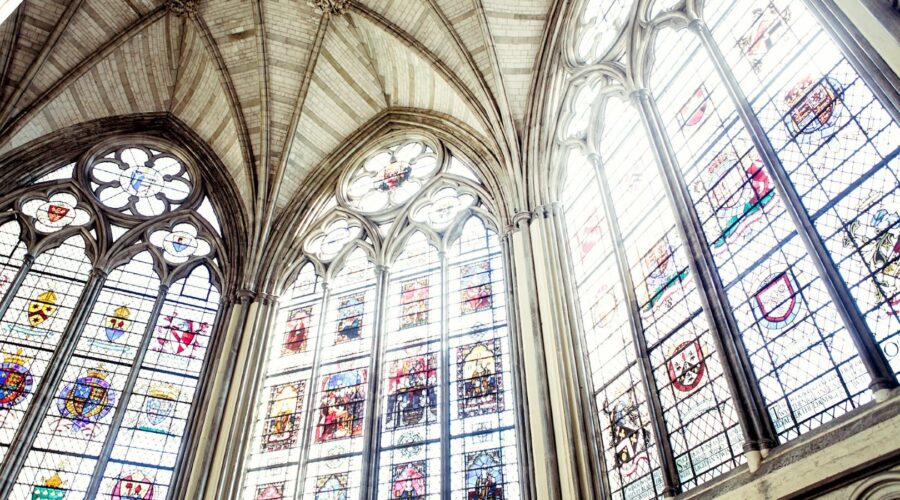
GriefShare: A Comprehensive Guide for Navigating Loss and Healing
Introduction
Grieving the loss of a loved one is an incredibly painful and overwhelming experience. GriefShare is a Christ-centered support group designed to provide a safe and compassionate space where individuals can connect with others who have experienced similar losses and learn practical coping mechanisms.
What is GriefShare?
GriefShare is a non-profit organization that offers a 13-week support group program for individuals grieving the loss of a loved one. The program is led by trained facilitators who have themselves experienced the pain of loss.
Each week, participants gather for a two-hour session that includes:
- Personal sharing and discussion
- Video teaching on a specific topic related to grief
- Small group discussions
- Silent prayer time
Who is GriefShare For?
GriefShare is open to anyone who has lost a loved one, regardless of their age, faith, or circumstances. It is particularly beneficial for individuals who are struggling to cope with their grief or who feel isolated and alone.
The Benefits of GriefShare
Participating in GriefShare can provide numerous benefits for grievers, including:
- Connection with others: GriefShare offers a supportive community where individuals can connect with others who understand what they are going through.
- Validation of emotions: GriefShare provides a safe space where grievers can express their emotions without judgment.
- Practical coping mechanisms: GriefShare teaches practical strategies for managing the challenges of grief.
- Spiritual support: GriefShare incorporates a spiritual component that can provide comfort and strength to those who are seeking it.
- Hope for the future: GriefShare helps grievers begin to envision a future beyond their loss.
How to Find a GriefShare Group
To find a GriefShare group near you, visit the GriefShare website.
Additional Resources
In addition to GriefShare, there are other resources available to help individuals cope with grief, including:
- National Suicide Prevention Lifeline: 1-800-273-8255
- Crisis Text Line: Text “HOME” to 741-741
- The Trevor Project: 1-866-488-7386
Conclusion
Grieving the loss of a loved one is a challenging journey. GriefShare provides a supportive and compassionate environment where grievers can connect with others, learn coping mechanisms, and find hope for the future. If you are struggling with grief, consider joining a GriefShare group near you.
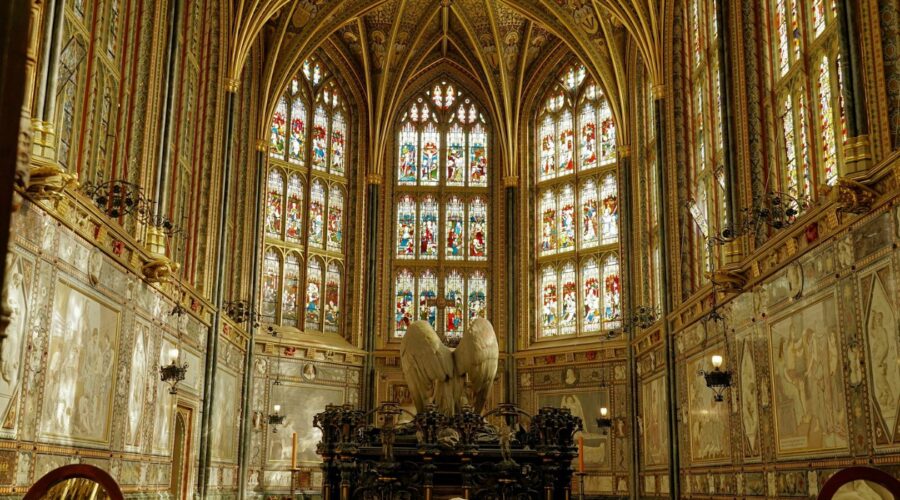
The Ultimate Guide to Buying a Church for Sale
Introduction
Purchasing a church can be an empowering and rewarding experience, offering ample space for worship, community gatherings, and various events. However, navigating the complexities of the church real estate market requires careful planning and due diligence. This comprehensive guide will provide you with essential insights and practical tips to assist you in making an informed decision when buying a church for sale.
Finding the Right Church
Determine Your Needs
Before embarking on your search, it’s crucial to assess your congregation’s specific needs. Consider the size and layout of the church, including the sanctuary, fellowship hall, classrooms, and office spaces. Determine whether any additional amenities, such as a gymnasium or kitchen, are required.
Research the Market
Thoroughly research the local real estate market to identify available churches that align with your needs and budget. Attend open houses, consult with real estate agents specializing in religious properties, and network with other churches to gather information.
Connect with a Broker
Consider hiring a real estate broker who has experience in church sales and understands the unique aspects of this niche market. A knowledgeable broker can guide you through the process, provide market insights, and advocate for your interests.
Evaluating the Property
Physical Inspection
Conduct a thorough physical inspection of the church, paying close attention to the condition of the roof, electrical systems, plumbing, and HVAC. Ensure that the property is structurally sound and meets all applicable building codes and safety regulations.
Zoning and Land Use
Verify the zoning of the property and any restrictions or limitations that may affect your intended use. Confirm that the church is permitted for religious purposes and review any zoning changes or development plans that could impact the property’s future value.
Environmental Concerns
Investigate potential environmental concerns, such as soil contamination, radon gas, or lead paint. Conduct environmental assessments to identify any risks and address any necessary remediation measures.
Financing and Legal Considerations
Financing Options
Explore various financing options available for church purchases, including traditional bank loans, government-backed mortgages, and specialized programs for religious institutions. Secure pre-approval for financing before making an offer to strengthen your negotiating position.
Legal Review
Consult with an attorney specializing in real estate law to review the purchase agreement, deed, and any other relevant documents. Ensure that you understand the terms and conditions of the sale, including any easements, encumbrances, or liens that may affect the property.
Title Insurance
Obtain title insurance to protect against any claims or disputes regarding the ownership or title to the property. Title insurance provides peace of mind and safeguards your investment.
Closing the Deal
Negotiation
Negotiate the purchase price, closing date, and any contingencies or special terms with the seller. Be prepared to compromise and consider the fair market value of the property when making an offer.
Contingencies
Include contingencies in the purchase agreement that protect your interests, such as the satisfactory completion of inspections, environmental assessments, or financing approval.
Closing Process
Attend the closing and sign the necessary documents to transfer ownership of the church. Pay the closing costs, including attorney fees, title insurance, and other expenses associated with the transaction.
Additional Tips
*
- Seek recommendations from other religious organizations or community leaders who have experience in church sales.
*
- Consider the long-term needs of your congregation and plan for future growth or expansion.
*
- Budget for ongoing maintenance and repair costs to ensure the church remains in excellent condition.
*
- Explore grant opportunities or fundraising campaigns to offset the cost of purchasing and maintaining the church.
*
- Establish a strong relationship with your local community and neighboring businesses to foster a positive and welcoming environment.
Conclusion
Purchasing a church for sale requires careful consideration, thorough research, and competent professional guidance. By following the steps outlined in this guide, you can navigate the process confidently and make an informed decision that will provide a long-term home for your congregation and serve as a beacon of faith and community for years to come.

Crossroads Church: A Comprehensive Guide
Introduction
Crossroads Church is a large, multi-site evangelical megachurch with a global reach. Founded in 1995, the church has grown rapidly over the years and now has over 400 campuses in 30 countries. Crossroads is known for its contemporary worship style, its focus on community, and its commitment to social justice.
History
Crossroads Church was founded in 1995 by Pastor Brian Houston. Houston had previously served as a pastor in New Zealand, where he was known for his innovative approach to ministry. When he started Crossroads, Houston envisioned a church that would be relevant to people who were not yet Christians. He wanted to create a church that was welcoming, non-judgmental, and focused on helping people connect with God.
In the early years, Crossroads met in a variety of rented spaces. In 2004, the church purchased its first permanent home, a former movie theater in Grapevine, Texas. The church has since expanded to over 400 campuses around the world.
Beliefs
Crossroads Church is an evangelical church, which means that it believes in the Bible as the inspired word of God. The church’s core beliefs include the following:
- The Bible is the inspired word of God and is the final authority for faith and practice.
- There is one God, who exists in three persons: the Father, the Son, and the Holy Spirit.
- Jesus Christ is the Son of God and is the only way to salvation.
- The Holy Spirit is the third person of the Trinity and is present in every believer.
- The Church is the body of Christ and is commissioned to make disciples of all nations.
Worship
Crossroads Church is known for its contemporary worship style. The church’s worship services are typically characterized by upbeat music, dynamic preaching, and a strong emphasis on participation. Crossroads also places a high value on community and fellowship. The church offers a variety of opportunities for people to connect with each other, including small groups, Bible studies, and social events.
Outreach
Crossroads Church is committed to social justice. The church has a number of outreach programs that are designed to help people in need. These programs include food banks, homeless shelters, and addiction recovery programs. Crossroads also supports a number of international aid organizations.
Controversies
Crossroads Church has been involved in a number of controversies over the years. Some of the most notable controversies include:
- In 2014, Crossroads was criticized for its stance on homosexuality. The church teaches that homosexuality is a sin and does not allow openly gay people to serve in leadership positions.
- In 2018, Crossroads was criticized for its handling of a sexual abuse case. A former pastor at the church was accused of sexually abusing a child. The church was accused of mishandling the case and protecting the pastor.
Conclusion
Crossroads Church is a large, influential megachurch with a global reach. The church is known for its contemporary worship style, its focus on community, and its commitment to social justice. Crossroads has also been involved in a number of controversies over the years. Despite these controversies, the church continues to grow and reach new people with its message of hope and redemption.

Unveiling the Profound Teachings of the Sermon on the Mount
Introduction
The Sermon on the Mount, found in Matthew chapters 5-7, is one of the most influential teachings ever given. Delivered by Jesus Christ, it contains a wealth of spiritual and ethical principles that have shaped the lives of countless individuals throughout history.
This blog post delves into the depth of the Sermon on the Mount, exploring its key aspects and illuminating its profound teachings. By gaining a deeper understanding of these teachings, we can enrich our spiritual lives and transform our daily actions.
The Beatitudes: Blessings from Above
Key Points
- The Beatitudes are eight blessings that describe the qualities of those who are blessed by God.
- Each blessing highlights a particular virtue, such as humility, righteousness, compassion, and peacemaking.
- The Beatitudes serve as a roadmap for living a life aligned with God’s will.
Examples
- “Blessed are the poor in spirit, for theirs is the kingdom of heaven.”
- “Blessed are those who hunger and thirst for righteousness, for they shall be satisfied.”
Salt and Light: Transforming the World
Key Points
- Jesus calls his followers to be “the salt of the earth” and “the light of the world.”
- Salt represents the preserving and transforming nature of God’s people.
- Light represents the illuminating and guiding power of God’s truth in the world.
Tips for Application
- Live lives that are marked by integrity and faithfulness, seasoning the world with God’s grace.
- Share the light of God’s love and wisdom with those around us, dispeling darkness and guiding them towards truth.
The True Law: A Higher Standard
Key Points
- Jesus clarifies the true meaning of God’s law, emphasizing the importance of the heart and inner motives.
- He calls for a higher standard of righteousness than mere external compliance with outward rules.
- Obedience to God’s commandments should flow from a transformed heart and a deep love for Him.
Table of Examples
| Commandment | Outward Compliance | True Law |
|—|—|—|
| “You shall not murder.” | Avoiding physical violence | Controlling anger and hatred in the heart |
| “You shall not commit adultery.” | Avoiding sexual immorality | Purity of thoughts and intentions |
| “You shall not swear falsely.” | Avoiding literal falsehoods | Holding truth sacred in all communication |The Lord’s Prayer: A Model for Communion
Key Points
- Jesus teaches his disciples a model prayer that reflects the essence of true worship and communion with God.
- The prayer emphasizes God’s sovereignty, provision, and forgiveness.
- It encourages us to approach God with humility, dependence, and a desire for His will to be done.
Example:
Our Father in heaven, hallowed be your name. Your kingdom come, your will be done, on earth as it is in heaven. Give us this day our daily bread, and forgive us our debts, as we also have forgiven our debtors. And lead us not into temptation, but deliver us from the evil one. For yours is the kingdom, and the power, and the glory, forever. Amen.
Conclusion
The Sermon on the Mount is a timeless masterpiece that continues to inspire and challenge believers. It offers a profound roadmap for living a life of fulfillment, purpose, and spiritual growth. By embracing the teachings of the Beatitudes, embodying the qualities of salt and light, living according to the true law, and practicing the Lord’s Prayer, we can experience the transformative power of God’s grace and make a meaningful impact on the world.
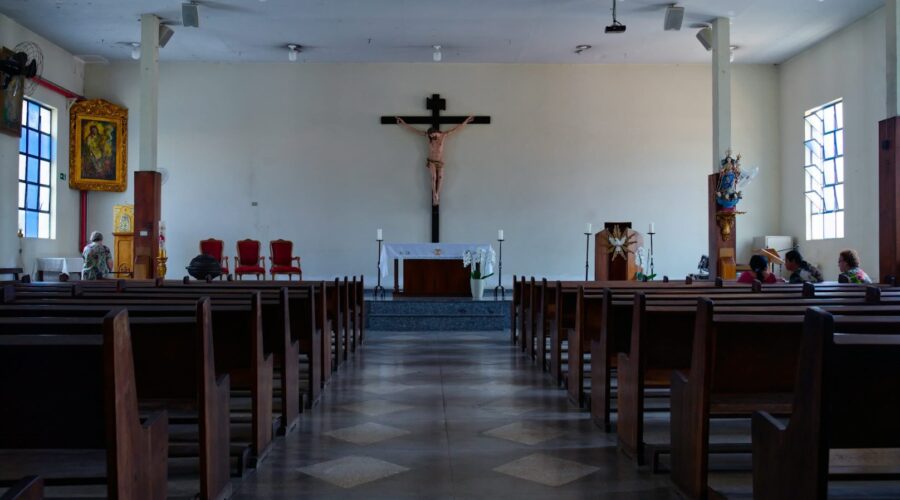
St James: A Comprehensive Guide to the Apostle and His Legacy
Introduction
St James, also known as James the Greater, is one of the twelve apostles of Jesus Christ. He holds a prominent position in Christian history and has left a lasting impact on the faith. This comprehensive guide will delve into the life, ministry, and legacy of St James, providing valuable insights and information for readers.
Life and Ministry
Early Life and Call
James, the son of Zebedee and Salome, was born in Bethsaida, Galilee. He was a fisherman by profession before Jesus called him to be an apostle. Along with his brother John and Peter, James formed Jesus’ inner circle of disciples.
Miracles and Teachings
James witnessed numerous miracles performed by Jesus, including the raising of Jairus’ daughter and the healing of the blind man at Bethsaida. He was also present at the Last Supper and was sent by Jesus to rebuke the Samaritans for their lack of hospitality.
Martyrdom
James is believed to have been the first apostle to be martyred. According to the book of Acts, King Herod Agrippa I ordered his execution by sword in approximately 44 AD. He became a symbol of courage and faithfulness in the face of persecution.
Legacy and Veneration
Patronage
St James is the patron saint of several countries, including Spain, Portugal, and Mexico. He is also the patron saint of knights, pilgrims, and travelers.
Shrine of Santiago de Compostela
James’ tomb is believed to be located in Santiago de Compostela, Spain. The shrine has become a major destination for pilgrims from around the world, who walk the Camino de Santiago to honor his memory.
Iconography
In Christian art, St James is often depicted with a staff, a scallop shell (symbol of pilgrimage), or a sword (symbol of his martyrdom). He is frequently seen wearing a pilgrim’s hat and carrying a cloak adorned with the symbol of the cross.
Significance in Christianity
Influence on Early Church
James was a prominent leader in the early Church. The council of Jerusalem, which determined the status of Gentile converts, is believed to have been influenced by his views.
Epistle of James
The New Testament contains an epistle attributed to James. This letter emphasizes the importance of faith and good works and addresses issues of practical morality.
Symbolism and Inspiration
St James represents the sacrifice and dedication of the early apostles. His unwavering faith and willingness to endure martyrdom have been a source of inspiration for Christians throughout history.
Pilgrimage and Camino de Santiago
History of the Pilgrimage
The pilgrimage to Santiago de Compostela dates back to the 9th century. Legend has it that the remains of St James were discovered in Galicia, Spain, which led to the establishment of the shrine.
Routes and Significance
The Camino de Santiago consists of several pilgrimage routes that lead to Santiago de Compostela. The most popular route is the French Way, which begins in St-Jean-Pied-de-Port, France. Pilgrims often walk or cycle along the routes, experiencing the spirituality and beauty of the surrounding landscapes.
Benefits and Spirituality
Pilgrimage to Santiago de Compostela can be a transformative experience. It provides an opportunity for physical, mental, and spiritual reflection. Pilgrims from all walks of life come together to embark on a journey of self-discovery and renewal.
Conclusion
St James remains a beloved and respected figure in Christianity. His life, ministry, and legacy have left an enduring mark on the faith. The veneration of St James and the pilgrimage to Santiago de Compostela continue to inspire and attract people from around the world. By understanding the significance of St James, we deepen our appreciation for the history and teachings of Christianity and the transformative power of pilgrimage.
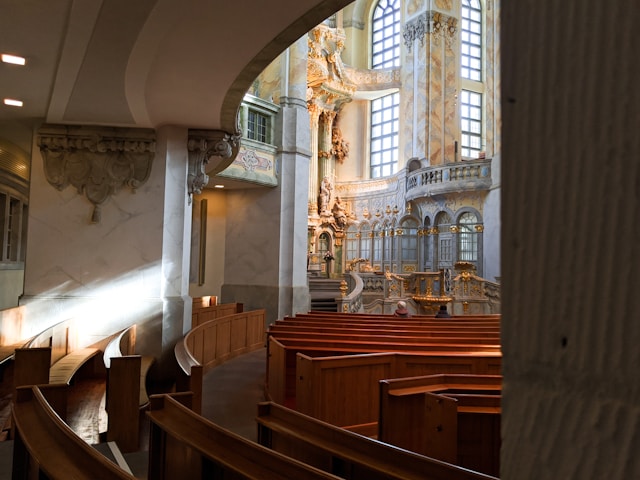
Lottie Moon: A Legacy of Mission Work in China
Introduction
Lottie Moon was an American Southern Baptist missionary who dedicated her life to the cause of reaching the people of China with the Gospel. Her tireless efforts and unwavering faith have left a lasting legacy on the history of Christian missions and the lives of countless individuals.
Early Life and Call to Mission
Lottie Moon was born in 1840 in Albermarle County, Virginia. From a young age, she exhibited a deep love for the Lord and a desire to serve Him. In 1873, she felt a clear call from God to join the mission field in China.
Arrival in China and Early Ministry
Lottie Moon arrived in China in 1873. She was assigned to the city of Ningbo, where she immersed herself in learning the language and culture. She adopted the local dress and customs, earning the trust and respect of the people she sought to reach.
Missionary Work
Lottie Moon’s missionary work focused primarily on:
- Evangelism: She preached the Gospel to large crowds, often facing opposition and persecution.
- Discipleship: She nurtured new believers, helping them to grow in their faith.
- Bible Translation: She assisted in the translation of the Bible into Chinese.
- Education: She established schools to provide Christian education to young people.
Challenges and Obstacles
Lottie Moon faced numerous challenges during her time in China:
- Language and Culture: Learning the Chinese language and adapting to the local culture was a significant undertaking.
- Religious Persecution: Her efforts to spread Christianity often met with opposition from the local government and traditionalists.
- Physical Hardships: The living conditions in China were often harsh, and she faced severe deprivation and sickness.
Legacy and Impact
Despite the challenges she encountered, Lottie Moon’s legacy continues to inspire countless believers around the world. Some of her notable accomplishments include:
- Establishment of Churches: She helped to establish numerous churches throughout China.
- Training of Chinese Pastors: She played a key role in training and mentoring Chinese pastors and missionaries.
- Christian Education: Her efforts in Christian education laid the foundation for the growth of the Christian faith in China.
Lottie Moon Christmas Offering
In 1888, the Southern Baptist Convention established the Lottie Moon Christmas Offering in her honor. This offering is an annual fundraising campaign that supports missionaries serving around the world. Since its inception, it has raised billions of dollars and has been instrumental in the spread of the Gospel to countless individuals.
Conclusion
Lottie Moon’s life and work serve as a testament to the power of faith and the impact that one person can have on the world. Her unwavering commitment to missions and her tireless efforts in China have left a spiritual legacy that continues to bear fruit today.
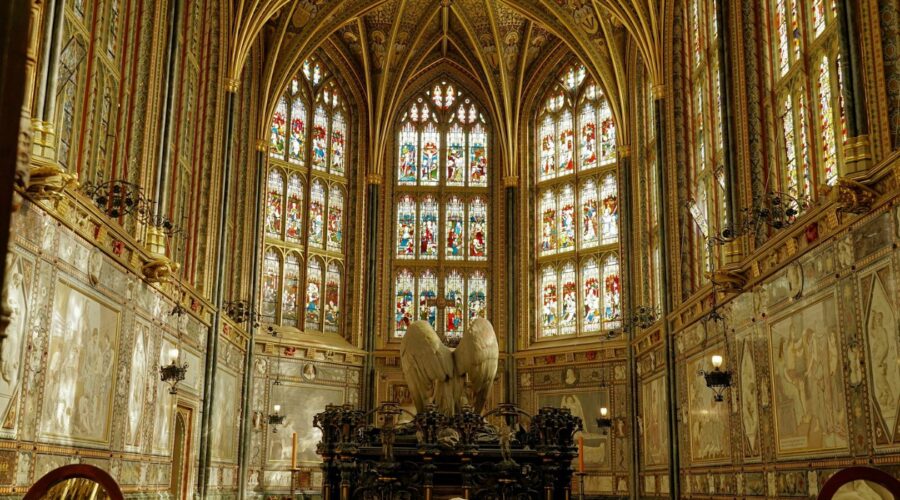
Discover Your Spiritual Gifts: A Comprehensive Guide to the Spiritual Gifts Test
Introduction: Unveiling Your Divine Purpose
Every individual possesses unique spiritual gifts bestowed upon them by the divine. These gifts are not merely abilities but God-given talents that empower us to serve others, share our faith, and reflect the love and compassion of the Creator.
To discern your spiritual gifts, a spiritual gift test can be an invaluable tool. This self-assessment enables you to discover your strengths, recognize areas of growth, and understand how your gifts fit into the larger purpose of God’s kingdom.
Section 1: Understanding the Concept of Spiritual Gifts
1.1 What are Spiritual Gifts?
- Abilities given by the Holy Spirit
- Manifestations of God’s grace
- Empowerment for Christian service and witness
1.2 The Purpose of Spiritual Gifts
- To edify the church (build up the body of Christ)
- To equip believers for ministry
- To glorify God and advance His kingdom
Section 2: Exploring the Spiritual Gifts Test
2.1 Types of Spiritual Gifts Tests
- Online assessments (e.g., Willow Creek Spiritual Gifts Test)
- Church-based assessments led by pastors or elders
- Self-reflection exercises and prayerful contemplation
2.2 Benefits of Taking a Spiritual Gifts Test
- Identify your unique strengths and weaknesses
- Gain insight into God’s purpose for your life
- Enhance your effectiveness in Christian service
- Foster personal growth and sanctification
Section 3: The Most Common Spiritual Gifts
3.1 Ministry Gifts
- Apostleship: Laying the foundation of the church
- Prophecy: Speaking on behalf of God
- Evangelism: Sharing the gospel with unbelievers
- Pastoring: Caring for and guiding the church
- Teaching: Communicating biblical truth
3.2 Motivational Gifts
- Exhortation: Encouraging believers to persevere
- Giving: Sharing resources with others
- Leadership: Guiding and inspiring others
- Mercy: Showing compassion and forgiveness
- Service: Helping others in practical ways
3.3 Manifestational Gifts
- Faith: Strong belief in God, His promises, and His power
- Healing: Restoring physical or emotional health
- Miracles: Performing extraordinary acts through divine power
- Prophecy: Delivering messages from God
- Tongues: Speaking in a foreign language not previously known
Section 4: Tips for Choosing a Spiritual Gifts Test
4.1 Consider Your Personal Preferences
- Online tests: Convenient and accessible
- Church-based assessments: Involve personal interaction with leaders
- Self-reflection: Requires honesty and prayerful contemplation
4.2 Seek Guidance from Others
- Ask your pastor or Christian counselors for recommendations
- Connect with fellow believers who have taken the test
- Pray for discernment and guidance from the Holy Spirit
4.3 Use the Results Wisely
- Don’t compare your gifts to others; focus on using them for God’s glory
- Seek opportunities to exercise and develop your gifts
- Continually grow and mature in your spiritual journey
Section 5: Conclusion: Using Your Gifts for Kingdom Impact
Discovering your spiritual gifts is not merely about gaining knowledge but about embracing a divine calling. It empowers you to participate fully in the work of God, making a tangible difference in the lives of others and advancing the kingdom of Christ.
By taking a spiritual gifts test and seeking God’s guidance, you can unlock the potential within you, glorify the Lord, and become a vessel of His grace and love.

Unveiling the Architectural Marvel: A Comprehensive Guide to the Sagrada Família
Introduction
Nestled in the heart of Barcelona, Spain, the Sagrada Família is an iconic masterpiece of Catalan architect Antoni Gaudí. With its soaring spires, intricate facades, and symbolic details, this UNESCO World Heritage Site is a testament to Gaudí’s genius and a must-see destination for travelers worldwide.
History and Architecture
Construction of the Sagrada Família began in 1882, and it remains an ongoing project to this day. Gaudí’s original plans called for an elaborate basilica with 18 spires, a monumental facade, and a crypt.
Facades: The Sagrada Família has three main facades, each representing a different aspect of Jesus’s life:
* Nativity Facade: Completed in 1925, this facade depicts scenes from Jesus’s birth.
* Passion Facade: Unveiled in 1987, this facade portrays Jesus’s crucifixion and resurrection.
* Glory Facade: Currently under construction, this facade will depict Jesus’s second coming and judgment.Towers: The Sagrada Família features a total of 18 towers, each representing an apostle, evangelist, or the Virgin Mary. The tallest towers reach a height of over 170 meters (560 feet).
Interior: The Sagrada Família’s interior is equally impressive, with soaring vaults, stained glass windows, and intricate columns. The church features a vast central nave and several side chapels, each with its unique design.
Symbolism and Meaning
The Sagrada Família is a deeply religious building, and its architecture is replete with symbolism:
* Cross: The towers represent the cross on which Jesus was crucified.
* Trees: The columns resemble trees, symbolizing the connection between heaven and earth.
* Animals: Various animals, such as turtles, fish, and birds, are depicted throughout the church, representing the diversity of creation.
* Light: The stained glass windows allow ample natural light to enter the interior, creating a sense of spirituality.Tips for Visiting
* Book tickets in advance: The Sagrada Família is a popular tourist destination, so it’s recommended to book tickets online well in advance to avoid long lines.
* Choose a guided tour: A guided tour is an excellent way to learn more about the history, architecture, and symbolism of the church.
* Visit at different times: The Sagrada Família looks different at various times of the day, so consider visiting both during the day and at night.
* Explore the surrounding area: The Sagrada Família is located in the Eixample district, which is home to many other attractions, shops, and restaurants.
* Take a bus or metro: The Sagrada Família is easily accessible by bus or metro, making it convenient to visit.Table: Key Features and Details of the Sagrada Família
| Feature | Details |
|———————|————————————————————————————————————-|
| Height | 170 meters (560 feet) |
| Length | 90 meters (295 feet) |
| Width | 60 meters (197 feet) |
| Towers | 18, representing apostles, evangelists, and the Virgin Mary |
| Facades | 3: Nativity, Passion, and Glory (under construction) |
| Architect | Antoni Gaudí |
| Construction start | 1882 |
| Construction status | Ongoing; estimated completion in 2026 |
| Style | Catalan Modernism |
| UNESCO status | World Heritage SiteLinks and References
* [Official website of the Sagrada Família](https://sagradafamilia.org/)
* [Barcelona City Pass](https://www.barcelonacitypass.com/en/) (includes access to the Sagrada Família)
* [The complete works of Antoni Gaudí](https://www.gaudiclub.com/en/)Conclusion
The Sagrada Família is a true architectural masterpiece that reflects the genius and spirituality of Antoni Gaudí. Its intricate designs, profound symbolism, and soaring beauty have made it a beloved landmark and a symbol of Barcelona. Whether you’re a first-time visitor or a returning admirer, the Sagrada Família is a must-see destination that will leave you in awe.

Delving into the Catholic Mass in the Modern Era
Introduction
The Catholic Mass, also known as the Eucharist, is the central liturgical celebration of the Catholic Church. It is a sacred event that brings together the community of believers to share in the meal that Jesus Christ instituted at the Last Supper. The Mass has evolved throughout history, but its essential elements remain the same: the readings from the Bible, the homily (sermon), the Eucharistic prayers, the consecration of the bread and wine, and the reception of Communion.
The Structure of the Mass
The Mass is divided into two main parts: the Liturgy of the Word and the Liturgy of the Eucharist.
Liturgy of the Word
* The Liturgy of the Word begins with the entrance procession, in which the priest and ministers process into the sanctuary.
* The priest then greets the congregation, and the people respond with “And with your spirit.”
* The Liturgy of the Word includes readings from the Old Testament, the New Testament, and a psalm.
* The readings are followed by a homily, in which the priest explains the meaning of the readings and applies them to the lives of the people.Liturgy of the Eucharist
* The Liturgy of the Eucharist begins with the preparation of the gifts, in which the bread and wine are brought to the altar.
* The priest then prays the Eucharistic prayers, which include the words of institution, by which the bread and wine are consecrated and become the Body and Blood of Christ.
* The Eucharistic prayers are followed by the Lord’s Prayer, the sign of peace, and the breaking of the bread.
* The priest then distributes Communion to the people.
* The Mass concludes with a recessional procession, in which the priest and ministers process out of the sanctuary.The Meaning of the Mass
The Mass is more than just a ritual or a set of words. It is a living encounter with Christ, who is present in the Eucharist. Through the Mass, we are united with Christ and with one another. We receive forgiveness for our sins, and we are strengthened for the journey of faith.
The Purpose of the Mass
The Mass has many purposes, including:
* To worship God
* To celebrate the death and resurrection of Jesus Christ
* To receive forgiveness for our sins
* To be united with Christ and with one another
* To be strengthened for the journey of faithParticipating in the Mass
There are many ways to participate in the Mass fully. Some ways include:
* Arriving on time and being present in body and mind
* Listening attentively to the readings and homily
* Praying the responses with devotion
* Receiving Communion worthily
* Participating in the singing and other musicTips for Attending Mass
Here are a few tips for attending Mass:
* Dress respectfully
* Be on time
* Be attentive
* Be reverent
* Receive Communion worthilyDress respectfully
While there is no specific dress code for attending Mass, it is generally considered appropriate to dress respectfully. This means avoiding shorts, tank tops, and other casual clothing.
Be on time
It is important to arrive on time for Mass so that you can participate in the entire celebration.
Be attentive
During Mass, it is important to be attentive to the readings, homily, and prayers. Avoid distractions such as talking or texting.
Be reverent
The Mass is a sacred celebration, so it is important to be reverent. Avoid talking, laughing, or making noise.
Receive Communion worthily
If you are planning to receive Communion, it is important to be in a state of grace. This means that you have not committed any mortal sins and have fasted for at least one hour before receiving Communion.
Conclusion
The Catholic Mass is a rich and meaningful celebration that brings us into contact with Christ and with one another. By participating in the Mass fully, we can grow in our faith and draw closer to God.
Additional Resources
* [The Catholic Mass](https://www.catholic.com/mass)
* [The Mass: A Guide for Beginners](https://www.loyolapress.com/our-catholic-faith/sacraments-and-prayer/mass/the-mass-a-guide-for-beginners)
* [The Meaning of the Mass](https://www.usccb.org/prayer-and-worship/the-mass/understanding-the-mass)